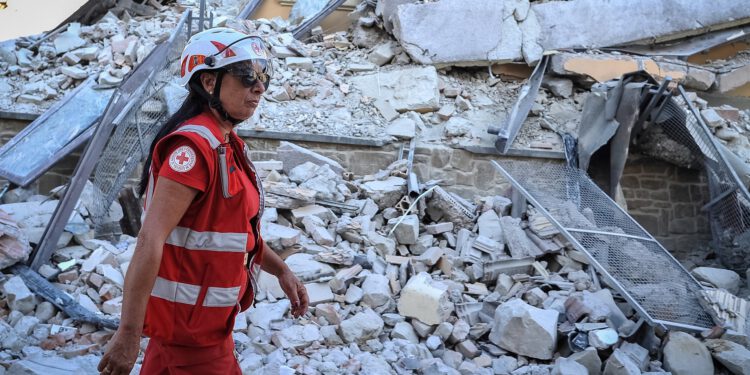The chances of predicting earthquakes grow with artificial intelligence techniques and the massive input of data into algorithms.
Over the centuries, natural disasters have been one of the most strikingly terrible phenomena. Cultures used to create a whole mythology around these moments when nature was unleashed fiercely. And, to this day, we still can’t predict earthquakes and other natural disasters. Earthquakes are particularly difficult to guess, both when they will occur and what their intensity will be.
Such a predictive capability would be crucial in locations at risk of tremors. Today there are some applications that promise some anticipation capacity, but most measure it in seconds. On a personal level it may be useful to know that in half a minute there will be an earthquake, but its purpose ends here.
For plans to be devised to deal with the earthquake, at the regional level and by the authorities, the anticipation that is needed is at least weeks or, at worst, days. The geophysicist Paul Johnson of the Los Alamos National Laboratory (in the state of New Mexico) works with these times. The scientist uses artificial intelligence techniques to try to predict earthquakes.
His approach differs from previous attempts at prediction in that use data massively. They are a huge set of measurements that are constantly taken before, during and after earthquakes in simulated environments. Johnson has developed an algorithm capable of minutely searching for patterns and learning from them.
Until now, the way to try to predict earthquakes was to manage location, time and magnitude data. From there a software looked for the clues that would predict a new earthquake. The information from Johnson’s algorithm is much more detailed. It is true that the data come from simulations, but they are much more complete. So, the algorithm can dive into possible causes that before were not even in the database.
The idea is for Johnson’s algorithm to learn for itself the more he works. It belongs to the category known as machine learning, a branch of artificial intelligence. In this way the scientists involved in the research have achieved, measuring the acoustic signals, approach to predict when an earthquake will occur.
Johnson and the other participants in the work are cautious about the results. They are aware that the conclusions cannot be extrapolated to real situations, with real earthquakes. Although they only focus on predicting when earthquakes will occur, not its magnitude, a more difficult aspect.
Johnson now feeds the algorithm with real data, in order to reproduce the same success as with simulated environments. If he succeeds he thinks they can predict earthquakes months or even years in advance. But it needs a lot of data, which can only be collected in years.
Images: IFRC and PreparedBC









